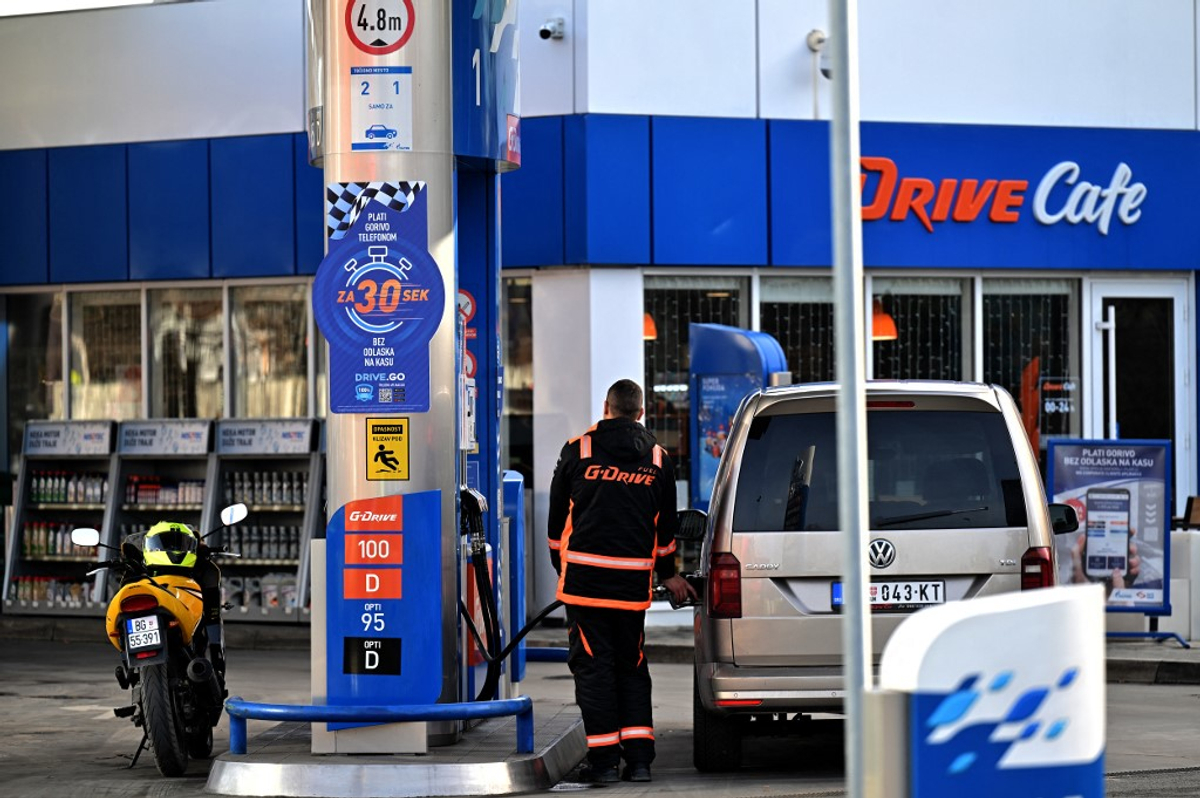“Don’t Mention the Drones” – Russian Media Admits Empty Gas Pumps Nationwide, Rocketing Fuel Prices
By Stefan Korshak
Copyright kyivpost

Ukraine’s relentless drone bombardment of Russia’s oil and gas industry has cut deeply into production of retail fuels, triggering supply chain shortages and even empty fuel stations, and angering motorists across the country.
Rocketing prices at the pump and automobile queues kilometers long are being thoroughly documented by Russian local media, but, in reports and news articles from Bryansk to Vladivostok, Russian news isn’t mentioning the why: Ukrainian robot aircraft, over and over, penetrating Russian air space and setting an oil refinery somewhere in west Russia on fire.
Ukraine’s military, intelligence and special operations agencies have taken formal credit for attacks against 12 major Russian refineries since Kyiv’s bombardment campaign against Russia’s energy and gas production was launched in late July. Damage caused by explosions and fires has cut Russian Federation oil processing capacity by between 17 and 25 percent, industry analysts say.
A Kyiv Post estimate based on local sources put Ukraine’s long-range drone strike total against Russian energy industry targets, as of Friday, at a minimum 21 attacks on Russian oil refineries since Aug. 1, with some facilities having been hit twice or even three times. According to that data, Ukrainian drones made major attacks and damaged other energy industry infrastructure, such as oil pumping stations, chemical plants and oil tanker terminals, at least seven times.
Downstream inconvenience for motorists in Russia’s wealthiest and most politically important Moscow and St. Petersburg regions have not been reported, but outside those centers, across Russia’s 11 time zones, finding fuel for one’s automobile has been a different story.
Shortages and outages have, per news reports, been most severe on the Pacific coast, in eastern and central Siberia, in the southwestern Rostov and Krasnodar regions, along the central and lower Volga River, and even the Kurile Islands next to Japan as well as the Kaliningrad enclave sandwiched between Lithuania and Poland.
Russians react
Across Russia’s 11 time zones, consensus is nearly universal there is a problem, but – at least in public – no one is blaming the Ukrainian drones.
Fuel station operators in Dagestan on Tuesday and Wednesday, a sometimes-restive and mostly Moslem region in the Caucasus, posted videos explaining to motorists they had no choice. One owner-businessman in Makhachkala, the Dagestan regional capital, stood in front of a Lukoil gas pump and hinted at supply chain problems without being too specific.
“We don’t want to raise the prices but we have such a situation in the country. Oil refineries have been taken off line, so the situation is the situation. We will all hope that everything will change for the better,” he said.
In Russia’s southwestern Stavropol region, the nationwide news and information platform Newstracker.ru reported on Thursday that “half of the gas stations are out of gas – Stavropol residents are worried about fuel shortages.” Regional governor Vladimir Vladimirov in a statement said he was “concerned” about rising prices and that a government commission would investigate possible price-fixing.
One of Russia’s wealthiest territories thanks to developed industry and agriculture, the Stavropol region receives most of its wholesale fuel from the Afipsky and Ilsky oil refineries near the city Stavropol, and a giant Lukoil-run refinery near the neighboring city of Volgograd.
Neither the news report nor governor Vladimirov, in their public comments, mentioned the Ukrainians: Drones hit and set fire to the Volgograd plant on Aug. 14 and again on Sept. 18, the Afipsky facility was set ablaze on Aug. 7 and 28, and the Ilsky site was hit on Sept. 5. All the Ukrainian robot plane attacks targeted hard-to-repair cracking towers and fuel storage reservoirs.
Paying through the nose at the pump
In the Volga River region of Saratov, in the heart of Russia’s oil processing industry, spiking prices have been widely reported. Opposition politician Aleksandr Anidalov (Communist Party) in an irate video blog to potential voters claimed Saratov has the fastest-rising fuel prices in all of Russia, and suggested “fuel speculators” conspiring with local officials might be responsible.
In Chita, an eastern Siberian city north of Mongolia, according to a Thursday NTS business television news report, fuel pump prices set new records at 60-64 rubles/liter (71-76 US cents per liter or as much as $2.88 per gallon) depending on octane. According to the NTS report, the increasing domestic prices are the result of “a general increase in prices because of inflation, and because Russian energy products are practically not purchased in world markets, so producers are maintaining their profit margin by increasing prices to the domestic market.”
In the worst-hit regions, particularly poorer and non-industrial districts of eastern Siberia, and the Russian-occupied Ukrainian territories of Luhansk and Crimea, local authorities have imposed rationing and fuel coupons in an attempt to control shortages.
In Simferopol, the Crimean region capital, on Friday, local news agencies reported 95 octane at a potentially all-Russia high price of 80 rubles a liter (96 cents per liter or $3.60 per gallon), and a little less than half the region’s fuel stations selling automobile fuel.
Drones? What drones?
Adjacent to fighting lines and a major Russian military base, Crimea and its fuel and fuel transportation infrastructure is hit by Ukrainian drones, bombs, artillery or missiles almost daily. A Tuesday statement issued by the Ministry of Fuel and Energy of the Republic of Crimea did not, however, mention the war.
Instead, that occupation authority statement to local resident said, empty fuel stations and massive automobile queues were because of “current demand, the significant distance between these gas stations and the trading companies’ oil depots, as well as temporary restrictions in logistics delivery routes.”
In Russian national media, so far, not only damage caused by Ukrainian drones, but even the fact of fuel shortages isn’t being talked about.
In the week Sept. 12-19, as fuel prices shot up to record levels and Russian social media and local news confirmed spot incidents of automobile queues kilometers long and fuel stations empty of fuel, Russia’s state news agency TASS reported, in daily reports (President Putin was presiding over a national economics planning conference), that Russia’s energy industry was in good shape and prospects for oil and fuel production were positive.
On Sept. 17 TASS quoted Kremlin energy industry manager Igor Shpurov: “Russia will be able to ensure the replenishment of its oil and gas reserves in 2025 and 2026.” Russian energy production has ample reserves and “there are no supply risks,” he said.
On the same day Shpurov’s comments were published nationally and worldwide by TASS, in the market-driven St. Petersburg International Commodity Exchange, the wholesale price of 92-octane gasoline set a new all-time record of 73,200 rubles/ton ($876/ton).
The following day, Ukrainian drones attacked and set fire to oil refineries in Volgograd and in Bashkorstan, the latter strike taking place 1,300 kilometers (800 miles) from probable Ukrainian launch sites. Russian national news ignored the attacks. Local news reported “falling debris” from shot-down drones ignited minor fires.
According to a Wednesday Reuters news agency report, management at the Russian energy transportation giant Transneft has warned that it would have to cut product deliveries in coming months because of damage caused to oil refineries in western Russia by Ukrainian drone strikes – but the frank warning was an internal message to major customers, and not for the general public.



